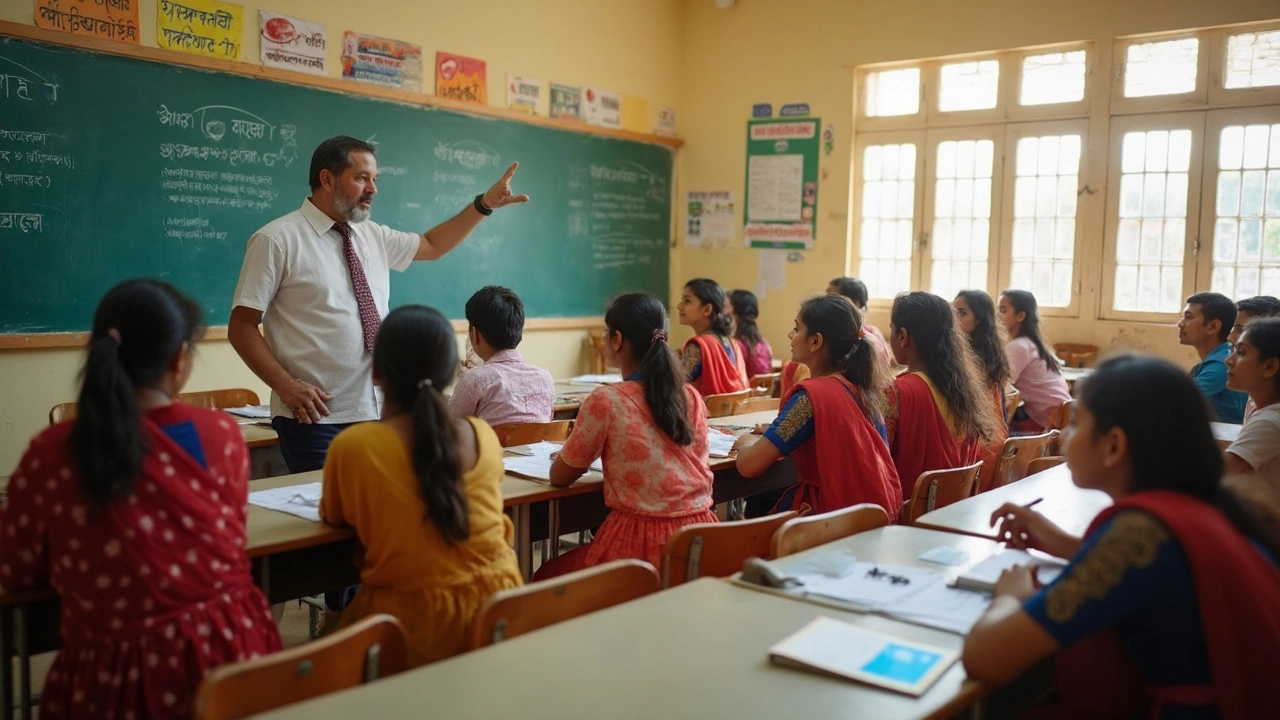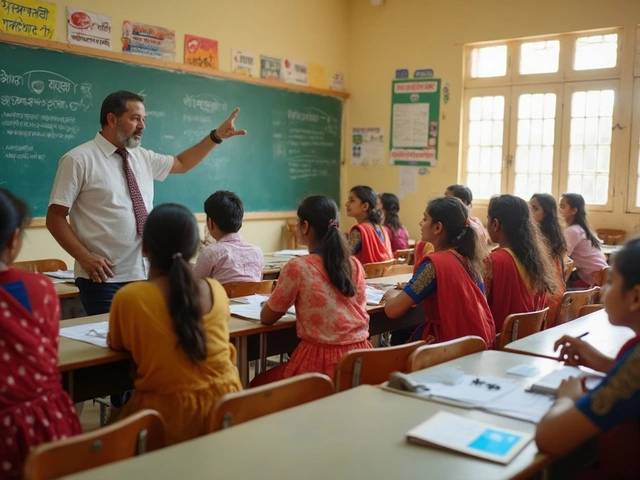If you've heard someone mention a 'normal school,' they're not talking about a school that's just regular. They're actually talking about a teacher training school. That's one of several names these places go by, especially if you dig into how people used to talk about education a few decades back.
In some parts of the world, you might hear people use the term 'college of education' or 'teacher’s college' instead. It all comes down to the same idea: a place where future teachers get the tools and experience they need before heading into real classrooms. These schools focus on things like classroom management, lesson planning, and the quirks of teaching kids from different backgrounds.
- Other Names for Teacher Training Schools
- Why the Name 'Normal School'?
- How Teacher Training Schools Operate
- Tips for Choosing the Right Program
Other Names for Teacher Training Schools
If you’re searching for info on where teachers learn their craft, it helps to know that a teacher training school goes by a bunch of different names, depending on where you are and the history behind it. The most classic term is “normal school.” That name showed up way back in the 19th century. In fact, the first American normal school opened in Lexington, Massachusetts, in 1839, and the whole idea came from French “écoles normales” designed to set the "norms" for teaching.
Across the globe, you’ll hear different terms for these schools. Here are a few common ones people use:
- Normal School – Mainly found in older educational texts, especially in the US, Europe, and Asia.
- Teachers’ College – Pretty common in Canada, Australia, and parts of Africa.
- College of Education – This is the usual term in the United States now, especially at the university level.
- Institute of Education – Often used in the UK, Ireland, and some Asian countries.
Curious how these names stack up depending on location and era? Check out this quick snapshot:
| Name | Where You’ll Hear It | When Used Most |
|---|---|---|
| Normal School | US, Europe, Asia | 1800s–mid-1900s |
| Teachers’ College | Canada, Australia, Africa | 1900s–Present |
| College of Education | United States | 1950s–Present |
| Institute of Education | UK, Ireland, Asia | Late 1900s–Present |
While the names have changed, the main job hasn’t. These schools still focus on preparing future teachers—just wrapped in different packaging depending on the era and country. Next time you see one of these names, you’ll know they all trace back to the same idea: learning how to teach, before stepping into a real classroom.
Why the Name 'Normal School'?
The term 'normal school' sounds odd today, but back in the 1800s, it was the standard way to describe a teacher training school. The 'normal' part comes from the French word 'école normale,' which basically meant a school that taught the 'norms,' or standards, of teaching. The idea started in France, spread to the United States, and then to other countries that wanted to train teachers to do things in a consistent way.
Folks didn’t just invent their own teaching styles. The whole point of these schools was to set a bar—a sort of 'how-to' manual for teaching. That way, kids in different places would learn in ways that weren’t completely random. According to the U.S. Library of Congress, "Normal schools were established to teach candidates the norms and methods of teaching—helping spread common standards and best practices."
"The American normal school movement began in 1839 in Lexington, Massachusetts, and within decades, they were the main route to becoming a public schoolteacher." — American Educational Research Association
Here's a quick look at how these schools grew in the U.S.:
| Year | Number of Normal Schools |
|---|---|
| 1850 | 12 |
| 1870 | 73 |
| 1900 | 140+ |
Eventually, most 'normal schools' changed their names to 'teachers’ colleges' or 'colleges of education' once their programs expanded past just the basics. But if someone drops the phrase 'normal school,' now you know exactly what they’re talking about and why it matters in teacher education history.

How Teacher Training Schools Operate
Teacher training schools, like "normal schools" and colleges of education, are all about getting people ready to teach. They mix textbooks with real experience. You don’t get stuck just listening to theories—you actually get out there, teach real lessons, and practice what you learn.
Most of these schools run a program that combines classroom learning and hands-on teaching, called "student teaching." You're placed in a real classroom, usually for a semester, alongside a certified teacher. This isn’t just shadowing—it’s about running lessons, dealing with challenges, and learning what works (and what doesn’t) in the real world. Research from the National Center for Education Statistics shows that almost 90% of new teachers in the U.S. do some sort of student teaching before they get certified.
Here’s a basic breakdown of what happens during a typical teacher training school course:
- Core classes about child development, classroom management, and educational psychology.
- Courses on teaching specific subjects, like math or science.
- Workshops on designing lessons and handling classroom tech.
- Observing experienced teachers, then teaching lessons yourself.
- Regular feedback sessions so you can keep getting better.
Assessment isn’t just about passing or failing. It’s more like ongoing support. Professors and mentor teachers give regular feedback every week. That helps fix mistakes early instead of letting them snowball. Some schools even use video recordings so you actually see how you teach and what you can change.
Take a quick look at how much time is spent on different activities at a typical teacher training school:
| Activity | % of Program Time |
|---|---|
| Classroom Instruction | 40% |
| Student Teaching/Fieldwork | 35% |
| Workshops/Seminars | 15% |
| Assessment & Feedback | 10% |
At the end, most teacher training schools require you to pass a licensing or certification test. That’s the last hurdle before landing your first job. If you're thinking about becoming a teacher, this setup really helps you hit the ground running—no guesswork about what the job is actually like.
Tips for Choosing the Right Program
Picking the best teacher training school isn’t just about checking off a list. You’re making a decision that could shape your whole teaching career. So, what should you really look out for?
First up, check the school’s accreditation. Programs approved by recognized education boards or ministries carry more weight when it’s time to apply for jobs. If you’re planning to teach in a specific region, make sure the program ticks all the local certification boxes. For example, in the U.S., programs should be accredited by bodies like CAEP (Council for the Accreditation of Educator Preparation).
Next, look at hands-on experience. The best programs don’t just keep you in the lecture hall — they get you out into real classrooms. A good rule of thumb? Pick a place that offers at least a semester of student teaching under supervision. Some schools even have partnerships with local schools, so you hit the ground running.
“Field experience is one of the strongest indicators of long-term teaching effectiveness. Newly certified teachers report feeling more prepared after working directly in classrooms during their training.” – National Center for Education Statistics
Also, pay attention to the course content. A solid program covers more than theory — you want lessons on tech in the classroom, special needs education, and even how to handle tough parent meetings. If they train you for just one grade level, but you want to be flexible, that’s something to consider, too.
Some quick things to double-check:
- Graduation and job placement rates – High rates mean schools have good reputations and network connections.
- Cost and available financial aid – Teacher training can get pricey, but there are grants and scholarships out there.
- Faculty experience – Are the professors long-time teachers or just researchers? Real-world teaching experience matters.
Here’s a snapshot of what you might compare:
| Program Feature | Program A | Program B |
|---|---|---|
| Accreditation | CAEP-Accredited | Not Accredited |
| Student Teaching Hours | 18 weeks | 8 weeks |
| Job Placement (1 yr after grad) | 85% | 60% |
| Average Tuition | $7,000/yr | $9,500/yr |
No program is perfect, but the right fit will line up with your career goals, budget, and preferred teaching style. Talk to recent grads if you can, and ask about their experiences. Your future classroom self will thank you for doing the homework now.

